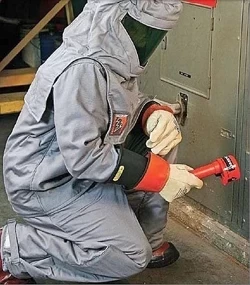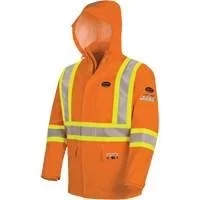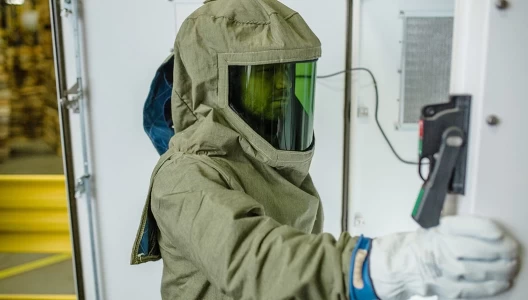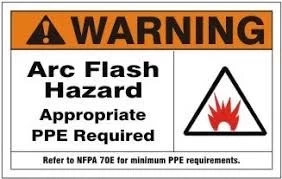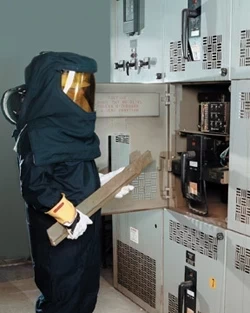Selecting the Right Arc Flash PPE
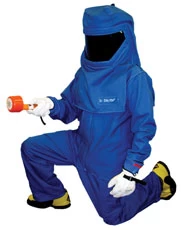
Selecting the appropriate Personal Protective Equipment (PPE) for arc flash hazards is a critical decision that affects the safety and well-being of electrical workers. The process involves matching PPE categories to the calculated incident energy levels of electrical tasks, considering the complexity of the work and the proximity to the hazard.
Visit Our Arc Flash Study Course
Understanding Arc Ratings and PPE Categories
- Incident Energy: Expressed in calories per square centimeter (cal/cm²), this value indicates the thermal energy a person would be exposed to at a given distance during an arc flash. Thorough arc flash hazard analysis is the only way to determine this reliably.
- Arc Rating (ATPV or EBT): Indicated on arc-rated garments, the Arc Thermal Performance Value (ATPV) or Energy Breakopen Threshold (EBT) signifies the maximum incident energy a fabric can withstand before there's a 50% chance of a second-degree burn.
- PPE Categories: NFPA 70E establishes PPE categories (0-4), each with a minimum arc rating. The required PPE category should equal or exceed the determined incident energy level.
Key Factors in PPE Selection
- Calculated Incident Energy: The foundation for PPE decisions. Incident energy can vary widely across a facility, even within a single piece of equipment, depending on system configuration and clearing times.
- Working Distance: The closer a worker is to a potential arc source, the higher the incident energy they'll be exposed to. PPE selection must factor in the minimum working distance required for a task.
- Task Complexity: Fine motor skills may be difficult with bulkier, higher-rated PPE. If possible, consider task modifications to allow working further away from the hazard, which might enable a lower PPE category.
- Additional Hazards: The presence of chemical, impact, or other non-arc flash hazards may necessitate multi-hazard PPE solutions or suitable layering of protective equipment.
Understanding Incident Energy Levels and PPE Categories
Calculating Incident Energy
Incident energy, measured in calories per square centimeter (cal/cm²), represents the potential exposure to thermal energy during an arc flash event. This calculation is crucial for determining the necessary level of protection and is influenced by factors like the electrical system's voltage, fault current, and the distance from the arc flash source.
PPE Categories and Protection Levels
Arc flash PPE is classified into categories, each corresponding to a range of incident energy levels. These categories guide the selection of PPE, ensuring that workers are equipped with garments and equipment that can withstand the thermal effects of an arc flash to a specific cal/cm² rating.
Matching PPE to Arc Flash Hazards
Task Complexity and Risk Assessment
The complexity of the work task plays a significant role in selecting PPE. Tasks involving higher electrical risk or closer proximity to live components require PPE with higher protection levels. A detailed risk assessment should be conducted to understand the specific hazards associated with each task.
Proximity to the Hazard
The distance from the arc flash source affects the incident energy exposure and, consequently, the PPE category required. Workers performing tasks closer to potential arc flash points need higher-rated PPE to ensure adequate protection.
Selection Guidelines for Arc Flash PPE
Adherence to Standards and Guidelines
Following standards such as NFPA 70E in the United States provides a framework for selecting arc flash PPE. These standards define the category levels and the corresponding minimum arc rating of PPE, helping organizations make informed decisions based on the calculated incident energy.
Consideration of Work Environment
The work environment's conditions, such as ambient temperature and physical space constraints, should also influence PPE selection. PPE that is too bulky or insulating may be impractical in hot or confined spaces, even if it offers higher protection levels.
Technological Trends in Arc Flash PPE
Advancements in Materials and Design
Innovations in fabric technology and garment design have led to PPE that offers higher protection levels without compromising comfort and mobility. These advancements make it easier to match the necessary protection requirements with practical, wearable solutions.
Smart PPE Technologies
Emerging trends include smart PPE equipped with sensors and connectivity features to monitor environmental conditions and warn of impending arc flash risks, enhancing safety management in real-time.
Implementing a Comprehensive Arc Flash PPE Program
Continuous Training and Education
Ensuring that workers understand how to select and use arc flash PPE correctly is essential. Continuous training and education programs are vital for maintaining safety standards and keeping pace with technological advancements.
Regular Review and Update
Arc flash hazard assessments and PPE programs should be regularly reviewed and updated to reflect changes in electrical systems, work practices, and PPE technology, ensuring ongoing relevance and protection.
Conclusion
Selecting the right arc flash PPE requires a detailed understanding of incident energy levels, task complexities, and proximity to hazards. By adhering to safety standards, considering environmental and task-specific factors, and leveraging technological advancements, organizations can ensure that their workers are equipped with the appropriate PPE to mitigate the risks of arc flash incidents effectively.

